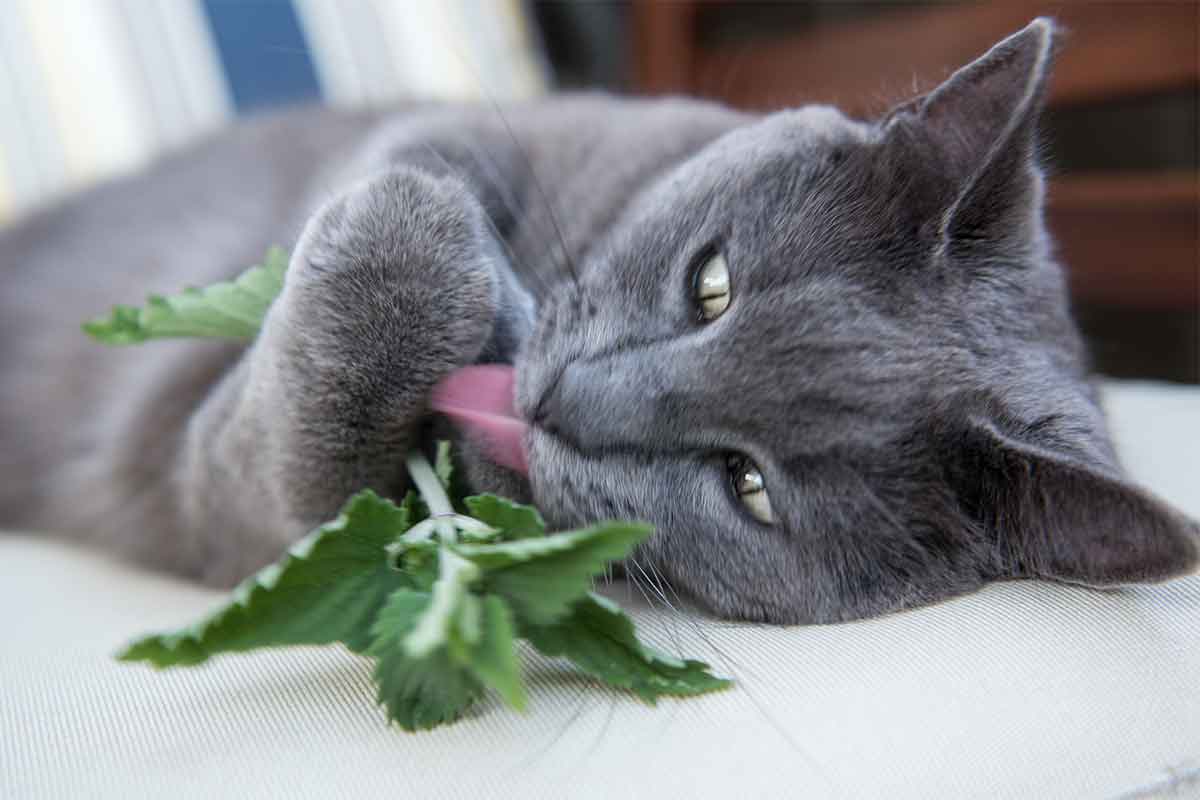Enriching the environment means providing suitable outlets to meet the needs of a species. One example: Cats have a hard-wired need to hunt and pounce. It’s great that cats are increasingly being kept indoors (they do live longer when indoors only), but we rarely meet their innate needs. Many zoos have a full-time employee whose sole task is to enrich the lives of resident animals, but it’s something most pet owners rarely think about. Evidence has shown that when animals live in dull environments void of enrichment, behavior problems are more likely to occur. Brain health is as important as physical health—they’re actually intertwined.
For cats, living in a dull environment is stressful, and it increases the odds of feline lower urinary tract disease (FLUTD). When FLUTD happens, it hurts to pee in the litter box, so many cats urinate outside the box because they associate it with the pain of urination. When cats have accidents, the human-animal bond may fracture, and cats are then sometimes put outdoors or relinquished to shelters. All this can be prevented or solved by enriched environments.
Since dogs and cats “live by their noses,” some have wondered which scents may safely enhance enrichment. While studies have been done to measure the effects of catnip, what we know about the reactions of cats to other botanical scents is based primarily on anecdotal reports.
In search of a scientific answer, the Winn Feline Foundation supported a study to demonstrate ways to provide olfactory enrichment in cats. The goal was to determine their responsiveness to old-school catnip, honeysuckle, valerian root, and silver vine. (The four species of plants evaluated in this study are generally regarded as safe and nontoxic for cats and humans).
The 100 cats who participated in the study were randomly selected. Some lived in a sanctuary for homeless cats, others in an animal shelter, some in private homes, and some participated during a visit to a veterinary practice. All cats were older than six months, 35 were neutered males, and 55 were spayed females. Sex was not noted for 10 cats in the study.
The botanicals were offered in one of two ways, either inside a clean sock or loosely spread on a clean surface. A control group was offered a sock with no botanical, and none of the cats responded to the control.
Silver vine and catnip elicited the most positive responses, with 79 percent of cats responding to silver vine with enjoyment behaviors, and 68 percent responding similarly to catnip. The response to silver vine was more intense than to catnip. Significantly fewer cats responded to Tatarian honeysuckle (53 percent) or valerian root (47 percent).
Male and female cats responded in equal numbers to all four plant materials, and no sex differences in intensity of response to the botanicals were detected. While age was not a significant factor in responsiveness, older cats generally responded with less intensity. Nearly all cats in the study were domestic shorthairs, so the study could not draw any conclusion about how different breeds of pedigreed cats might respond.
Does olfactory stimulation help shy cats to come out of their shell? Maybe it does. Cats scored as “scared and shy” responded as frequently and as intensely as the other behavioral groups.
Nearly all of the cats (94 out of 100) responded to at least one of the plant materials, while six cats did not respond to any of them, and 23 of the 95 cats (24 percent) who were exposed to all four botanicals responded to all of them.
In addition to domestic cats, some big cats were exposed to plant materials, including nine tigers (Panthera tigris; Pantherinae) and five bobcats (Lynx rufus; Felidae) living in a sanctuary for exotic cats. For these animals the botanicals were presented in paper bags or uncontained. One of the nine tigers appeared mildly interested in the catnip; the rest showed indifference. Five of the nine tigers appeared to actively dislike the silver vine, backing off and walking away. The other four were indifferent to it. Four of the bobcats responded positively to silver vine, and one liked catnip.
Nepetalactone is the compound associated with the catnip effect in responsive cats. Six compounds with similar chemical structure to nepetalactone are present in silver vine, while one of these is present in valerian root. When the plant materials were analyzed using gas chromatography, only the catnip had substantial quantities of nepetalactone; the other botanicals did not contain significant quantities of this chemical.
Although silver vine was better liked by cats than catnip, it is expensive and difficult to obtain, as it comes only from east Asia.
Researchers came to no absolute conclusions as to how their results might be used but speculated that they may add variety to enrich cats’ home environments and may reduce stress.
In shelters, plant materials may help shy or frightened cats to experience enjoyment behaviors and display playfulness, which has been identified in another study as being an important factor in the decision of potential adopters to choose a particular cat. Botanicals can also be used for training purposes, socialization, and non-caloric rewards.
Catnip may even be used to lure feral cats into humane traps as effectively as food and can be used to support these animals as they undergo a trap-neuter-return process. Plant materials from which cats derive pleasure can be used to support cats in stressful situations such as boarding, transportation, or hospitalization and medical procedures.
Because not all cats respond positively to catnip, it is important for professionals as well as cat owners to be aware that other plant materials are available as alternatives. Many cats who are not interested in catnip may benefit from being offered one of the other botanicals evaluated in this study.
This article was reviewed/edited by board-certified veterinary behaviorist Dr. Kenneth Martin and/or veterinary technician specialist in behavior Debbie Martin, LVT








